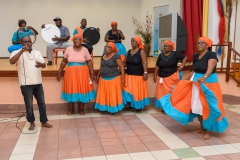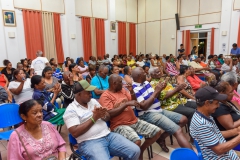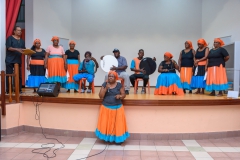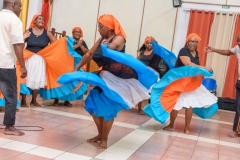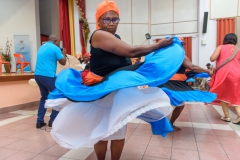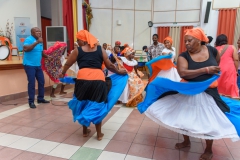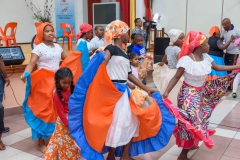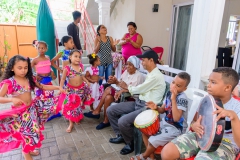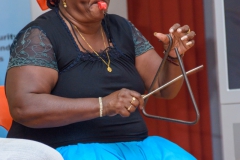Sega Tambour Chagos
Sega Tambour Chagos also known as Sega Chagos or Sega Sagosyen is a performing art of music, song and dance of the Chagossian community, including the ex-inhabitants of Diego Garcia, Peros Banos and Salomon Islands of the Chagos Archipelago and their descendants wherever they are. Although, the people of Chagos were uprooted from their islands, they have continued to strive to maintain their traditional music and ways of living in Mauritius and other places. For the Chagossians, their Sega (Sega Tambour Chagos) is a means of social bonding and communication.
According to the Chagossians, they only performed the ‘Sega’ on Saturday nights. The kids were not allowed to participate as it was considered a party for the adults only. The party basically consisted of the ‘tambour’ beating, singing, dancing and sharing of food and drinks, with the drinking and singing going on for hours’. Chagossians also state that the parties would start around eight o’clock in the evening and go on until the next morning and there was no need to invite people as anybody could participate freely.
The party involved singing, dancing and eating and, the ‘Baka’, the ‘Calou’ and ‘Seraz’ were the most popular Chagossian drinks and food that were consumed on that day. The ‘baka’ was one of their favourite drinks which was made of fermented wheat, rice or lentils and pumpkin and other fruits. According to the Chagossians, baka was a healthy drink. The calou is a juice which is made from fermented coconut palm sap, while the ‘Seraz’ is fish with coconut milk.
Sega Tambour Chagos is inscribed on the UNESCO List of Intangible Cultural Heritage In Need of Urgent Safeguarding since 11 December 2019.

